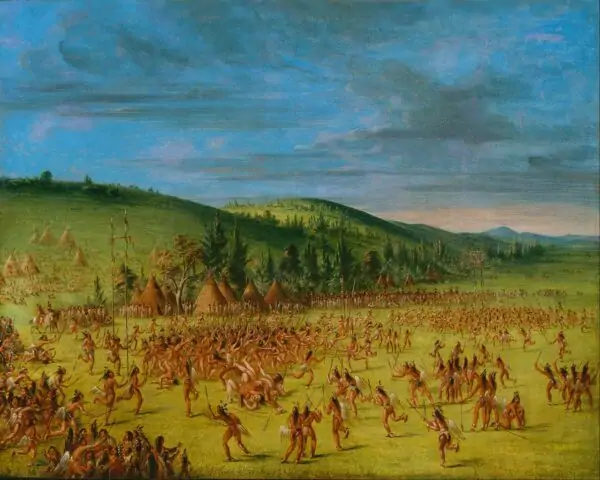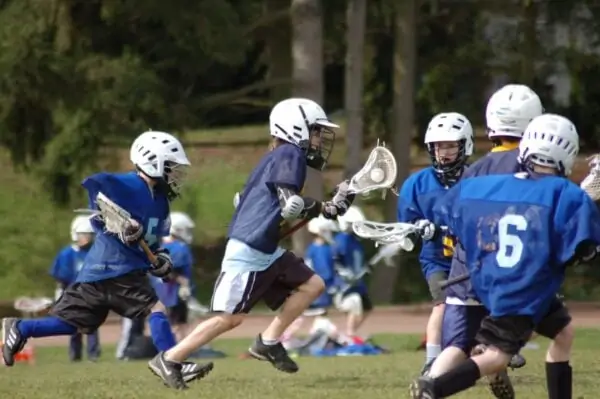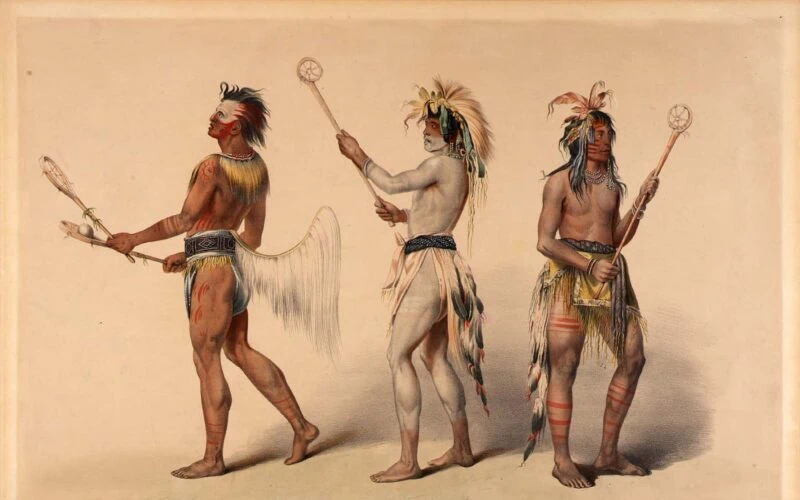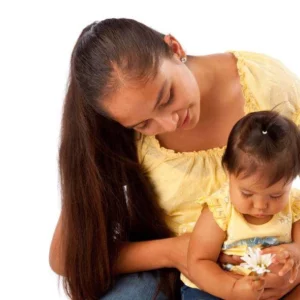The sport of lacrosse has a rich history, dating back to 1100 A.D. It's since exploded in popularity, with high school and college participation spiking across the country in recent years.
Collegiate lacrosse has become an NCAA staple, and two professional leagues Major League Lacrosse and National League Lacrosse have emerged in the past three decades.
But many still ask the question: Is lacrosse Native American?
Did Native Americans Invent Lacrosse?
Lacrosse is, according to several accounts, America's oldest team sport. But is lacrosse Native American?
Well, modern-day lacrosse actually evolved from several games played by Native American tribes. These games were played by the Iroquois people and the Haudenosaunee, in what is now New York and along the Canadian border.
We know that the earliest iterations of lacrosse probably looked quite a bit different than the game you see played today across college campuses. For instance, early Native Americans played lacrosse barefoot, and with no equipment and a very relaxed set of rules. Early lacrosse matches likely featured 100-1,000 men playing at once. That's far more in than the modern lacrosse format, which features 20 total players or 10 on each team.
Players in early lacrosse matches also played with wooden sticks with net baskets or pockets on the end. The nets were made of deer sinew. To boot, the original lacrosse fields had no official boundaries, so fields could span miles and miles and matches could literally last several days. The goals could range from 500 yards to six miles apart.
According to Joe Finn, an archivist at the National Lacrosse Hall of Fame and Museum, lacrosse was very much a formative part of Native American culture. “It was played to prepare them for war,” he said. “And it was also a social event where tribes would get together for trade and sport. It was sometimes used to settle disputes.”

European Influence on Lacrosse
French missionaries first witnessed Native Americans playing lacrosse in Quebec, Canada, in the 1600s, according to Finn. The missionaries gave it the name “lacrosse” because they thought the sticks resembled the bishop’s cross carried during religious ceremonies.
While the Native American versions of lacrosse had fewer rules and less structure, the European settlers began to establish a more concrete expression of the game. That meant hard boundaries, more rules, and fewer players, for starters.
Lacrosse continued to develop and evolve across Canada. In 1859, it was even named the country's national sport. Eight years later, the first lacrosse rulebook was written by George Beers, a dentist from Montreal. Beers even reportedly took a team of white and indigenous lacrosse players from Canada to England to play a match in front of Queen Victoria.
Queen Victoria wrote about the match in her diary, according to The Washington Post. “The game [is] very pretty to watch,” she wrote. “It is played with a ball and there is much running.”

Was Lacrosse “Medicine” for Native Americans?
According to History.com, some Native Americans believe the sport of lacrosse was a gift from the Creator to be enjoyed by humans or actually be treated as medicine.
But this isn't just ancient folklore. The Haudenosaunee still play ceremonial lacrosse matches to heal the sick, and the Onodaga still play an annual lacrosse match with male participants of all ages.
Even though organized lacrosse leagues generally follow the same format, each Native American community typically plays the game with its own set of rules. That generally means no referees, no timekeeper and no penalties. In other words, it's more free-flowing and less structured than the version you see played professionally or on college campuses.
“Lacrosse isn’t just a game, it’s a medicine, it heals,” said Onondaga Nation member Neal Powless, a former professional player for the Iroquois Nationals lacrosse team. “You hear it time and time again how the spirit of the sport itself has healed people because they believe that it’s medicine that speaks to the spirit and the soul.”
Modern-Day Lacrosse
Tehoka 😳
(📸: @brett_roberts8 )#TRUEfallball pic.twitter.com/VJioa9lsM3
— Inside Lacrosse (@Inside_Lacrosse) October 15, 2017
More highlights of First Nations lacrosse player, Tehoka Nanticoke, HERE.
Lacrosse moved from Canada down to the U.S. in 1879 when Canadian John Flannery, founder of the U.S. National Amateur Lacrosse Association in 1879, was transferred to Brooklyn by his employer, according to Finn.
Lacrosse was first played at the Olympics in 1904 but only made an appearance at one more Olympic Games after that: 1908. However, there's hope that lacrosse could soon return to the Olympics as the International Olympic Committee granted the sport full recognition in 2021. That means lacrosse could return to the Olympics as soon as 2028.
Contemporary lacrosse takes place on a field with 20 players (10 on each side) holding sticks with nets attached at one end. They use the nets to catch, hold, pass and shoot a small, rubber ball into the opposing team's goal. The team with the most goals at the end of the match is declared the winner.
As the game has evolved, so too has the equipment used in lacrosse. The original wooden sticks has been gradually phased out by plastic and metal sticks, which are much lighter and easier to handle. This has helped increase the tempo and scoring of the average lacrosse match.
Despite all of the evolutions and advancements the sport has seen, the spirit and essence of lacrosse has remained true to many of the First Nation communities who play it to this day.
So is lacrosse Native American? It's difficult to say, but while it has been adopted in communities across the country, the roots of lacrosse will always be firmly planted in Native American history.
Last Updated on November 15, 2022 by vhormazabal




